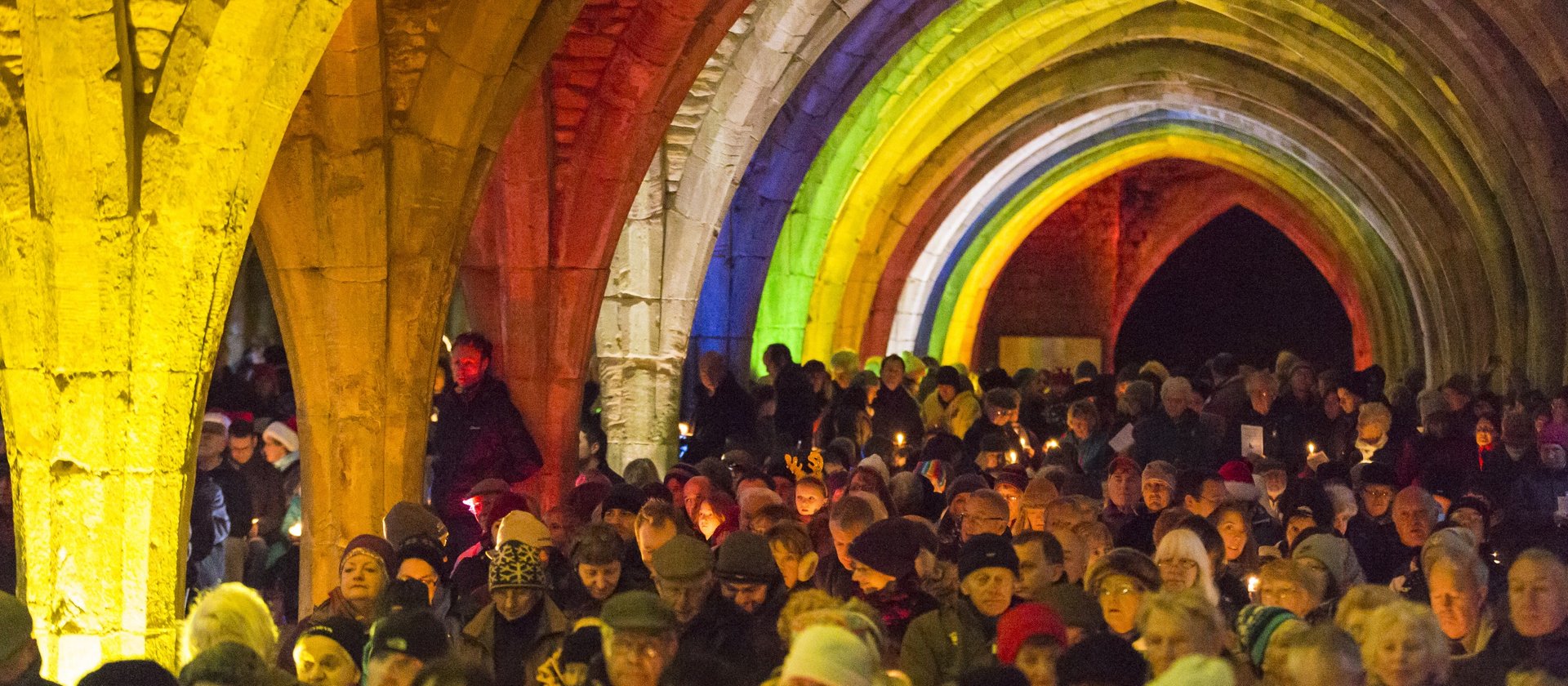-
A European Christmas (Weekly blog, 23 December 2018)
Posted on December 23, 2018A blog by Catherine Leonard, Secretary-General
Last week I read a couple of Christmas related articles on the National Trust website. First a lovely piece about why we sing Christmas Carols. This comes from the ‘Trusted Source’ project, a partnership between the National Trust and Oxford University. The author lectures in music and is researching the practice of organised worship in the early Christian church. A perfect combination of scholarly research and storytelling!
A greener Christmas
Secondly, an article about how to have a greener Christmas. (How to recycle your tree, use up leftovers, make your own decorations, etc.) Having just come back from the COP talks in Poland, it was great to read some practical tips for a greener festive season. Moreover, I felt a lot less guilty about my Christmas tree and Christmas wreath! For a couple of years we’ve harvested our tree at the National Trust’s Devil’s Punchbowl. Armed with saws and gloves, you set off onto the common and cut down the tree you like the look of. I presume this saves the Trust from thinning out the trees (?) and brings in some welcome funds for conservation (£20 a tree). For us, it’s a lovely Christmas tradition. And an excuse for a long walk!
I always make a wreath but this year with the benefit of Gardening Club training in homemade Christmas decorations! Moss pulled out of the lawn is stuffed into a wire frame and then edged with Leyland Cyprus sprigs. Then garden and hedgerow greenery is added: Ivy, rosemary, box, yew, holly, mistletoe. Finally topped off with tiny crab apples, ivy flowers and cinnamon sticks (bought – but will be recycled next year!). Et voilà!

A traditional ‘British’ Christmas?
This got me thinking about Christmas traditions and where they come from. Funnily enough (with everything going on in the UK at the moment), a lot of our yuletide favourites originate in Europe!
Christmas trees were popularised by Prince Albert, Queen Victoria’s husband, in the 1840s. He was German and they’ve been decorating trees with gingerbread and apples since the 16th century. Interestingly, Norway now gifts Britain a giant Christmas tree to display in Trafalgar Square every year. This is in recognition of the country’s sacrifice during the Second World War.

Harvesting our Christmas Tree from the Devil’s Punchbowl
Holly, ivy and mistletoe are also sometimes used to decorate homes. Moreover mistletoe was used as a sign of love and friendship in Norse mythology and that’s where the custom of kissing under mistletoe comes from.
Pantomimes first appeared in Britain in the 18th century. They were based on the ‘commedia dell’arte’, the Italian tradition of improvised theatre. The commedia dell’arte had ‘stock’ characters like clowns, jesters and a ‘baddie’ which were replicated in pantomime. The stories were mixed up with fairy tales and folk culture to become the pantomimes we know and love today.
Christmas crackers, which grace every meal over the festive season were first made in the late 1840s by a London sweet maker called Tom Smith. He was inspired by French sweets wrapped in pretty paper. To begin with they didn’t sell well so he added a bang or crack! The yule log or ‘bûche de Noël’ is traditionally eaten in France and Belgium. The idea of Christingles came from a Moravian Church in Germany and missionaries brought them to England in the late 1700s.
A British invention
However, the custom of sending Christmas cards is a truly British institution! It was the idea of Sir Henry Cole, who was a senior civil servant at the post office. The year was 1843 and Sir Henry thought it might be a good way to get ordinary people to use the post!

And in an ironic twist, there is a German festive tradition of watching an English film called ‘Dinner for One’ or Der 90. Geburtstag. The film is a sketch in English about an elderly lady celebrating her birthday with her butler, who impersonates all her guests. It is very popular in Germany at New Year. However, most English people have never heard of it!
Well, here’s wishing you a very merry Christmas, however you celebrate it, and a very Happy New Year. See you in 2019!

 44 (0)20 7824 7157
44 (0)20 7824 7157